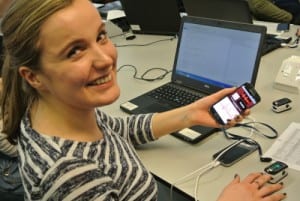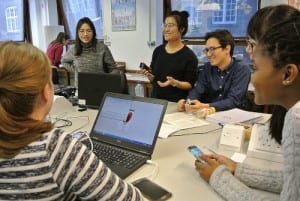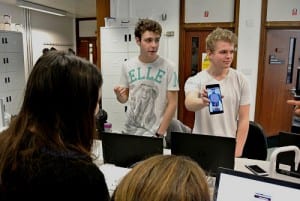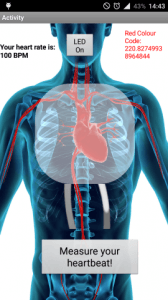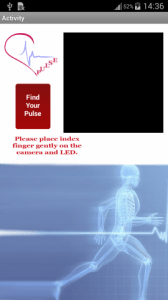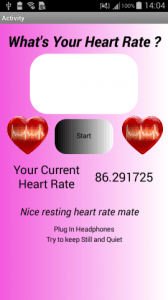Smartphone app for detecting pulse rate
By rmaptst, on 17 February 2016
By Terence Leung
Our 1st year Biomedical Engineering students had very little computer programming experience when they began their first scenario week on Monday, 8th February. So to them, developing a smartphone app that can measure pulse rate seemed almost like an impossible task. However, as they struggled through the week, they learned about building the graphical user interface, switching the phone’s flash on and off, accessing pixel values from the phone’s camera, and performing Fast Fourier Transform to get the frequency of a periodic signal. Gradually, their apps were taking shape. Indeed by Friday all 10 teams had successfully developed their apps, some completed with a customised logo, animation, and even sound effect. It was a tough week, typically 9 to 5 (except Wednesday afternoon off). Many students found it tiring but were very proud of their first ever healthcare apps. Hopefully not their last!
 Close
Close



